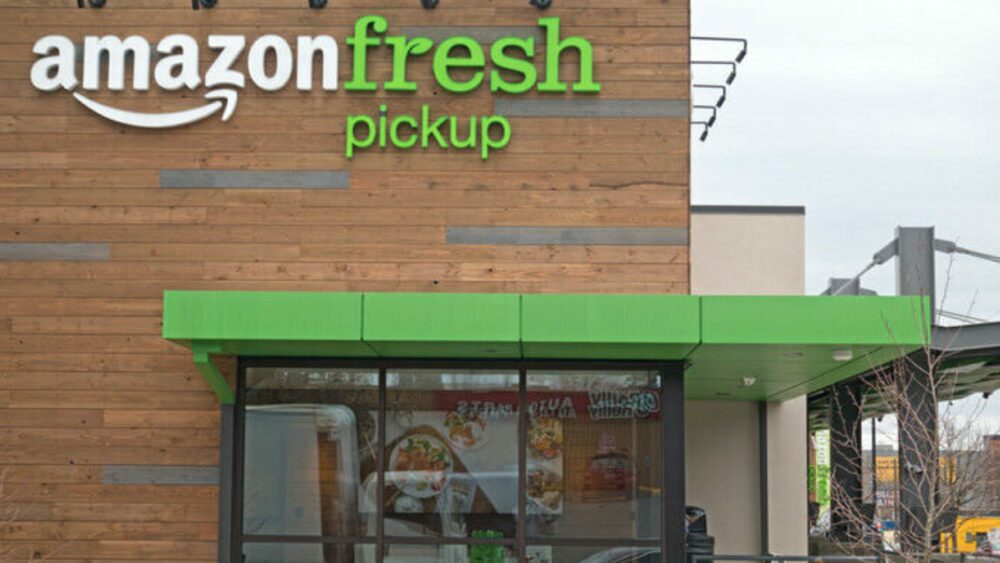When Amazon announced its purchase of Whole Foods for $13.7 billion, the internet collectively gasped. Why would Amazon purchase a struggling grocery chain at what amounted to a 27 percent premium? What bet was the always three-steps-ahead Jeff Bezos making?
The true intent behind Bezos’s gamble remains unclear, but here are three of the cards we think he’s holding.
1. The Future of Everything
Brick-and-mortar retail is undergoing an extinction-level event, and in many cases the asteroid crashing to earth is Amazon. In just the first two months of 2017, more than 1,700 stores have closed across America. And these are not just local mom-and-pop stores. Retail behemoths such as JCPenney, Macy’s, Sears, and, of course, Whole Foods, have all announced closings.
The decline in traditional retail shopping corresponds with the rise of e-commerce. In 2016, Americans for the first time reported that they were doing more than 50 percent of their shopping online. This percentage will only increase as more and more retailers cut down their average delivery times in an attempt to compete with Amazon, which accounts for 43 percent of all online sales. In a recent study, Slice Intelligence found that the average delivery time for 30 major online retailers was four days in 2016, down from 8.3 days in 2014.
However, the online grocery market has been something of a white whale for e-commerce companies. While a quarter of American households already purchase some of their groceries online, it remains a low-margin business. Even popular meal-delivery services such as Plated and Blue Apron have had a hard time delivering actual profits; Blue Apron recently began offering a more diverse selection of products—wine glasses, knives, bags of peppercorns—in an attempt to fatten those margins. In fact, to remain competitive in the new world created by Amazon’s purchase of Whole Foods, Blue Apron’s upcoming IPO seeks to raise about $500 million, five times what it had initially estimated.
The point here is that, when it comes to groceries, consumers want the same diversity of options and convenience that they have come to expect in all other aspects of their lives. What’s been missing is a company with big enough buying power, and a large enough distribution network, to make it truly profitable.
2. Shop Globally, Eat Locally
Back in 2013, Amazon expanded its own grocery service, AmazonFresh. Amazon had been testing it in Seattle for a few years, and its success locally convinced Bezos to take it to a few other select cities. AmazonFresh runs not on a home-delivery model (that’s too expensive and unreliable) but instead on a pick-up model in which customers fetch their online orders at local Amazon kiosks. Initially, AmazonFresh was available to Prime subscribers for an additional $299 per year, but almost immediately Amazon was forced to slash that price. John Mackey, founder and CEO of Whole Foods, predicted that this foray would be “Amazon’s Waterloo.”
An article from the Motley Fool put Amazon’s conundrum this way:
“First, Walmart and Kroger have a clear head start with hundreds of kiosks already up and running. If Amazon wants to truly compete with them, it would need to open hundreds of its own locations across the country. Without its own consumer-facing real estate like Wal-Mart and Kroger have, Amazon needs to find and convert space to open more pickup centers, a time-consuming, expensive, and difficult task. Economically, it’s much more efficient for Walmart and Kroger to provide such a service since they only need to build a kiosk in a store parking lot at one of their thousands of stores.”
Suddenly, Amazon’s purchase of Whole Foods begins to make a whole lot more sense. As Dennis Berman, financial editor for the Wall Street Journal, tweeted, “Amazon did not just buy Whole Foods grocery stores. It bought 431 upper-income, prime-location distribution nodes for everything it does.”
Imagine a future where all your purchases, from jeans to new-movie releases to a bag of chips, are already waiting for you in a single digital shopping cart.
Perhaps Mackey had his Napoleonic history wrong—maybe AmazonFresh wasn’t Napoleon at Waterloo. Maybe AmazonFresh was the first skirmish in the Battle of Austerlitz, the battle where Napoleon ended the thousand-year reign of the Holy Roman Empire and began his march to being named emperor.
3. A One-Stop Shop
No one is sure if Bezos intends to use local Whole Foods markets as giant pick-up kiosks or as distribution centers for a home-delivery service (or both—maybe you’ll be able to redeem special discounts on in-store purchases). Either way, he is betting on one of the most foundational concepts in e-commerce: Online consumers want to do all their shopping on as few sites as possible. Ideally, they would like to make all their purchases at a single location, a digital version of Walmart’s business model.
As Derek Thompson noted in the Atlantic, “Driving to the grocery store, finding parking, seeking out the produce section, and waiting several minutes in Line 6 is a pain. What’s not a pain? Lying on your couch, watching Downton Abbey on Prime Video, and shouting to your Amazon daemon, ‘Alexa, I need six heirloom tomatoes and a bottle of extra-virgin olive oil for tomorrow’s delivery.’”
In comparison to its potential competitors—Walmart and its expanding digital footprint is one of them—Amazon has one huge advantage when it comes to anticipating and then satisfying the hunger of potential consumers: data. In one of the million think pieces about this purchase, an economic analyst commented to USA Today that “Amazon is smart about mining data. They own data like Saudi Arabia has crude oil.”
So imagine a future where all your purchases, from jeans to new-movie releases to a bag of chips, are already waiting for you in a single digital shopping cart. This is the future Jeff Bezos is banking on.
Photos: Shutterstock





